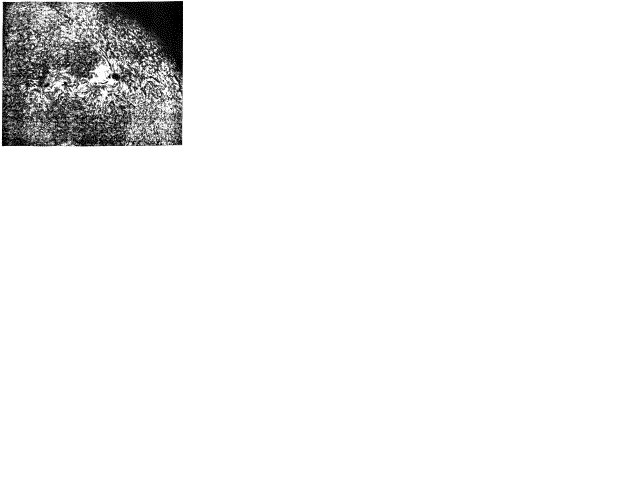Lecture 1
Contents- Temperature in the Interior
- Ionization of Atoms
- Radiation Pressure and Mass
- The Interior of a Star
- Opacity of Stellar Matter
- The Relation of Brightness to Mass
- Dense Stars
THE sun belongs to a system containing some 3,000 million stars. The stars are globes comparable in size with the sun, that is to say, of the order of a million miles in diameter. The space for their accommodation is on the most lavish scale. Imagine thirty cricket balls roaming the whole interior of the earth; the stars roaming the heavens are just as little crowded and run as little risk of collision as the cricket balls. We marvel at the grandeur of the stellar system. But this probably is not the limit. Evidence is growing that the spiral nebulae are 'island universes' outside our own stellar system. It may well be that our survey covers only one unit of a vaster organization.
A drop of water contains several thousand million million million atoms. Each atom is about one hundred millionth of an inch in diameter. Here we marvel at the minute delicacy of the workmanship. But this is not the limit. Within the atom are the much smaller electrons pursuing orbits, like planets round the sun, in a space which relatively to their size is no less roomy than the solar system.
Nearly midway in scale between the atom and the star there is another structure no less marvellous -- the human body. Man is slightly nearer to the atom than to the star. About 10^27 atoms build his body; about 10^28 human bodies constitute enough material to build a star.
From his central position man can survey the grandest works of Nature with the astronomer, or the minutest works with the physicist. To-night I ask you to look both ways. For the road to a knowledge of the stars leads through the atom; and important knowledge of the atom has been reached through the stars.
 Fig 1. The Sun. Hydrogen Spectroheliogram.
Fig 1. The Sun. Hydrogen Spectroheliogram.- taken by Mr. Evershed at Kodaikanal Observatory, Madras.
The star most familiar to us is the sun. Astronomically speaking, it is close at hand. We can measure its size, weigh it, take its temperature, and so on, more easily than the other stars. We can take photographs of its surface, whereas the other stars are so distant that the largest telescope in the world does not magnify them into anything more than points of light. Figs. 1 and 2 show recent pictures of the sun's surface. No doubt the stars in general would show similar features if they were near enough to be examined.
 Fig 2. Solar Vortices. Hydrogen Spectroheliogram. (Mount Wilson Observatory, California.)
Fig 2. Solar Vortices. Hydrogen Spectroheliogram. (Mount Wilson Observatory, California.) I must first explain that these are not the ordinary photographs. Simple photographs show very well the dark blotches called sunspots, but otherwise they are rather flat and uninteresting. The pictures here shown were taken with a spectro-heliograph, an instrument which looks out for light of just one variety (wave-length) and ignores all the rest. The ultimate effect of this selection is that the instrument sorts out the different levels in the sun's atmosphere and shows what is going on at one level, instead of giving a single blurred impression of all levels superposed. Fig. 2, which refers to a high level, gives a wonderful picture of whirlwinds and commotion. I think that the solar meteorologists would be likely to describe these vortices in terms not unfamiliar to us' A deep depression with secondaries is approaching, and a renewal of unsettled conditions is probable.' However that may be, there is always one safe weather forecast on the sun; cyclone or anticyclone, the temperature will be very warm -- about 6,000 degrees in fact.
But just now I do not wish to linger over the surface layers or atmosphere of the sun. A great many new and interesting discoveries have recently been made in this region, and much of the new knowledge is very germane to my subject of 'Stars and Atoms'. But personally I am more at home underneath the
| Previous chapter | Back | Home | Email this | Search | Discuss | Bookmark | Next chapter/page |